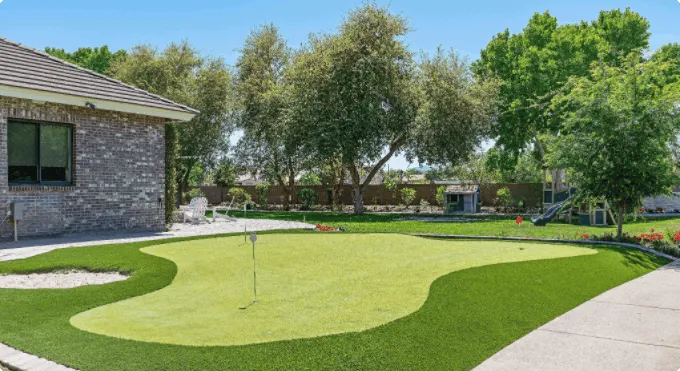
- Afrikaans
- Arabic
- Belarusian
- Bengali
- Czech
- Danish
- Dutch
- English
- Esperanto
- Estonian
- Finnish
- French
- German
- Greek
- Hindi
- Hungarian
- Icelandic
- Indonesian
- irish
- Italian
- Japanese
- kazakh
- Rwandese
- Korean
- Kyrgyz
- Lao
- Latin
- Latvian
- Malay
- Mongolian
- Myanmar
- Norwegian
- Persian
- Polish
- Portuguese
- Romanian
- Russian
- Serbian
- Spanish
- Swedish
- Tagalog
- Tajik
- Thai
- Turkish
- Turkmen
- Ukrainian
- Urdu
- Uighur
- Uzbek
- Vietnamese
replacing grass with artificial turf
Dec . 16, 2024 09:00 Back to list
Replacing Grass with Artificial Turf A Sustainable Solution?
In recent years, the trend of replacing natural grass with artificial turf has gained popularity among homeowners, sports facilities, and public parks. While the allure of having a green, lush lawn without the maintenance work is appealing, it's essential to explore both the advantages and drawbacks of this transition.
The Attraction of Artificial Turf
One of the primary reasons people are turning to artificial turf is the promise of low maintenance. Natural grass requires regular mowing, watering, fertilizing, and pest control, which can be labor-intensive and costly. In contrast, artificial turf eliminates these tasks. Once installed, synthetic grass only requires occasional cleaning and brushing to maintain its appearance. This convenience is particularly appealing in regions where water scarcity is a concern, as artificial turf does not require irrigation, thereby conserving precious water resources.
Moreover, artificial turf provides a consistent appearance and usability throughout the year, unaffected by weather conditions. It can withstand heavy foot traffic, making it ideal for sports fields and playgrounds. Unlike natural grass, which can become muddy and damaged after heavy rain, artificial surfaces drain well and remain playable. This reliability is a significant factor for schools and athletic facilities looking to optimize their use of space.
Environmental Considerations
While artificial turf offers several practical benefits, environmental considerations are paramount. Critics argue that synthetic grass is made from non-biodegradable materials, primarily petroleum products, which contribute to environmental pollution during production and disposal. The manufacturing process also involves significant energy consumption and greenhouse gas emissions.
However, advancements in technology have led to the development of more sustainable artificial turfs. Many manufacturers are now producing turf made from recycled materials and conducting eco-friendly manufacturing processes. Furthermore, innovations in turf recycling programs are emerging, seeking to mitigate the environmental impact by reusing and repurposing old artificial grass.
replacing grass with artificial turf

Another important consideration is the heat retention properties of artificial turf. Natural grass helps to cool the surrounding area through a process called evapotranspiration. In contrast, synthetic turf can become significantly hotter, leading to potential heat island effects, especially in urban settings. This can impact microclimates and make open spaces less comfortable for users during peak summer months.
Aesthetic Appeal
There is no denying the aesthetic appeal of a manicured lawn, and artificial turf provides a consistently vibrant and lush appearance. For homeowners, this means a beautiful lawn year-round without the seasonal changes that come with natural grass. Even during droughts or other adverse conditions, artificial turf remains green and inviting.
Moreover, the variety of artificial turf available allows homeowners to choose the perfect grass type that suits their needs, whether for children’s play areas, pet-friendly yards, or decorative landscaping. This versatility in design has prompted many individuals to consider artificial turf as a viable alternative to traditional grass.
Real-World Applications and Trends
The trend of replacing grass with artificial turf extends beyond residential yards. Various municipalities and sports organizations are increasingly investing in synthetic surfaces for parks, stadiums, and sports complexes. For example, many professional sports teams have adopted artificial turf to reduce maintenance costs and ensure year-round playability. This trend is also seen in schools and community centers promoting physical activity and ensuring fields are not lost to weather conditions.
In conclusion, replacing grass with artificial turf presents both opportunities and challenges. The reduced maintenance, resilience under foot traffic, and aesthetic consistency draw many towards synthetic options. However, careful consideration of the environmental impact, heat retention issues, and material sustainability must guide these choices. As technology continues to advance, the hope is that artificial turf can achieve a balance between practicality and environmental responsibility, providing a sustainable solution for beautiful green spaces in the future. Whether for homeowners, sports facilities, or public parks, engaging in informed debates about artificial turf’s implications will be essential for creating landscapes that are both enjoyable and sustainable.
-
The Benefits of Artificial Turf for Indoors
NewsJul.15,2025
-
How Artificial Grass Suppliers Ensure Quality Products
NewsJul.15,2025
-
Artificial Grass and Pets: A Space for Relaxation
NewsJul.08,2025
-
Balcony & Outdoor Decoration with Artificial Grass
NewsJul.08,2025
-
Best Indoor Artificial Grass for Home
NewsJul.07,2025
-
Best Pet Turf for Dogs: Safe & Durable Artificial Grass Options
NewsJul.07,2025
Products categories









